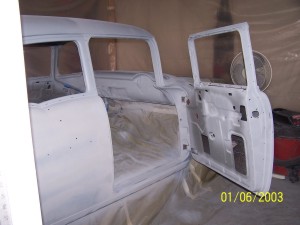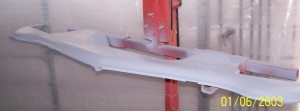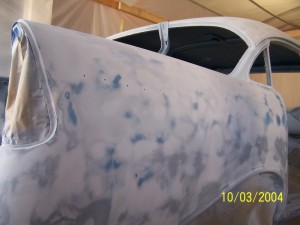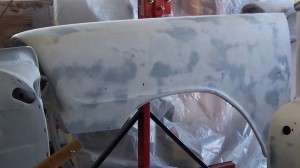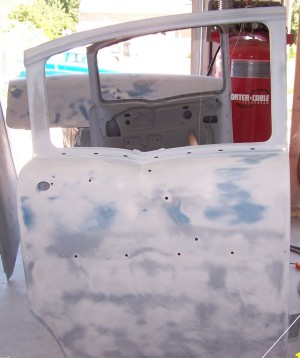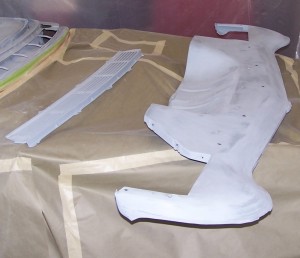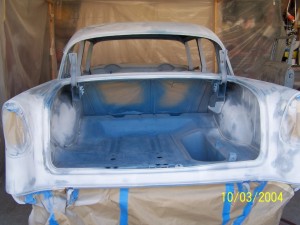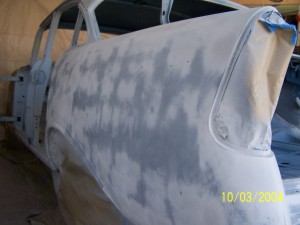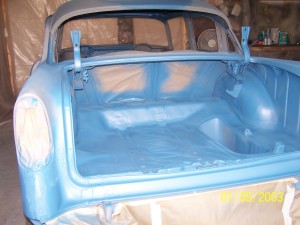
Next to seal the major putty work and the first
epoxy primer layer, we spot sprayed a second coat of epoxy primer,
this time a dark blue.

All of the blue spot have some amount of putty work and/or sand thru
areas to bare metal.

The entire passenger rear quarter panel was either worked or sanded.
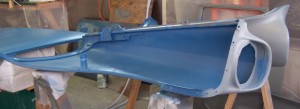
The blue epoxy was used to seal the inside
of the front fenders.
Now that the car
was in epoxy, we knew what was coming next, the body work. Fortunately,
there doesn't seem to be much, but what does need to be done is mostly
in the worst spots to reach. After a survey of every piece, we found
that we had to touch every piece.
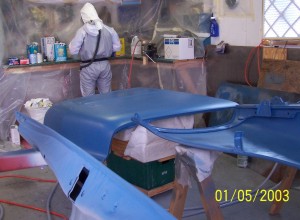
Even the hood had some minor spot that had to be
taken care of.
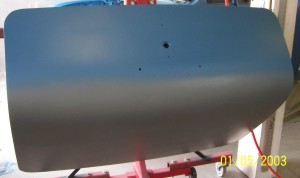
The bottom edge of the deck lid had to be worked
a lot.
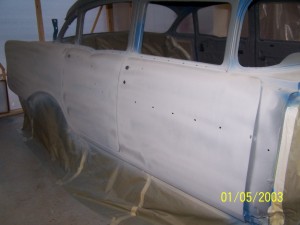
We sprayed featherfill, a high build, easy to sand
surface prep to help smooth the lines.
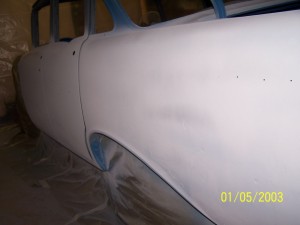
Even at this stage, you can still see a few
waves in the rear driver quarter panel.
As we worked each
fender and door, we noticed slight waves and bumps on each piece. After
several discussions with the local paint shop and the Paintucation
forum, we decided to use Featherfill to even out the waves. Featherfill
sands easy and made all the difference in the surface of the body panels,
but it has a couple of drawbacks. Be sure to wear a dust mask for this
and you will have to seal it with another layer of primer because it
really soaks in whatever is shot over it for the first layer.
